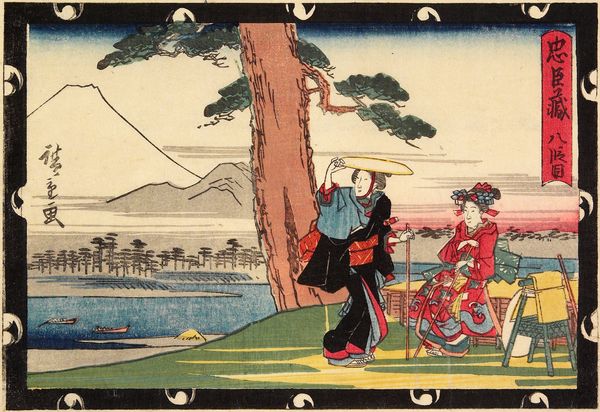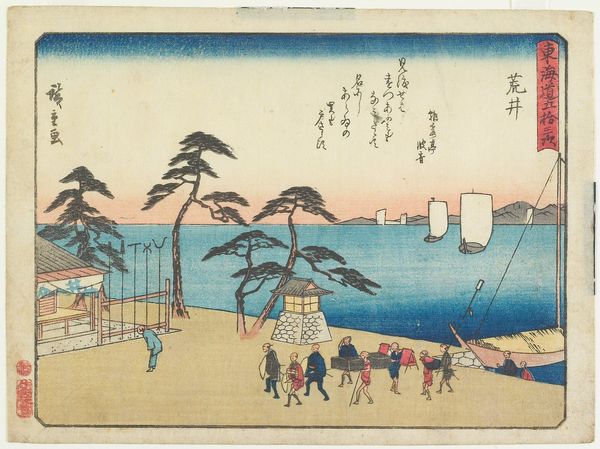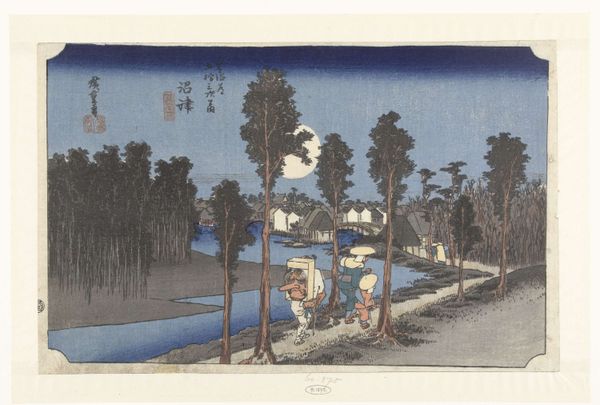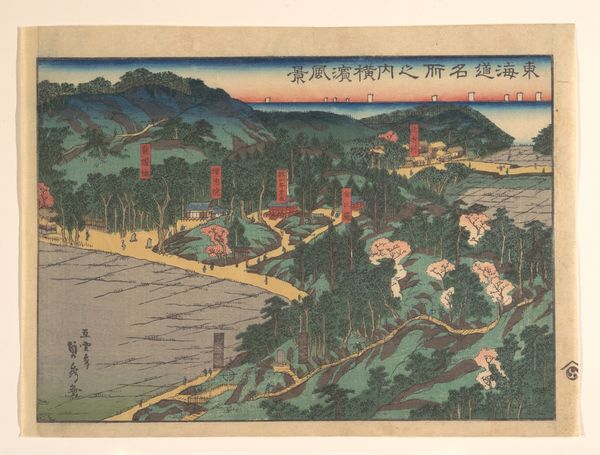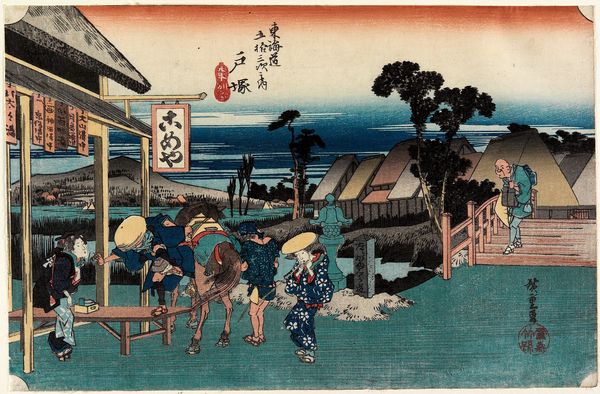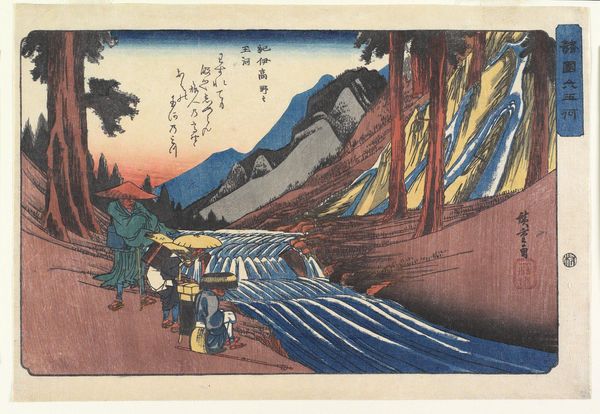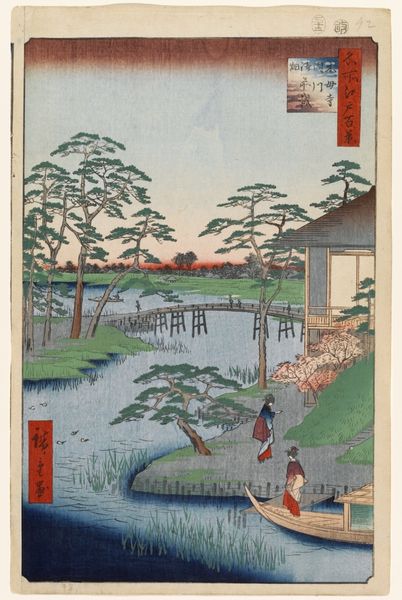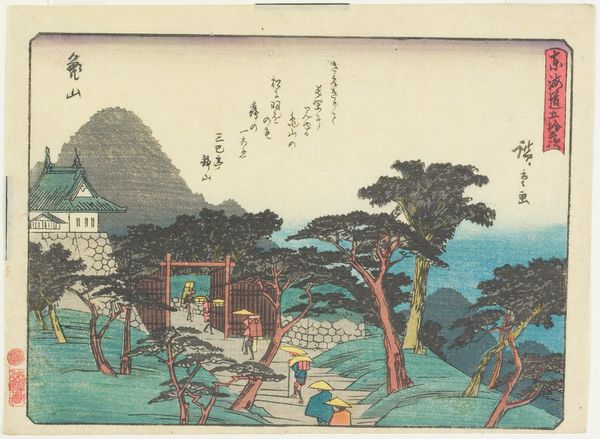
View of Zōzu Mountain in Sanuki Province Possibly 1856
0:00
0:00
print, woodblock-print
#
water colours
# print
#
asian-art
#
landscape
#
ukiyo-e
#
japan
#
coloured pencil
#
woodblock-print
Dimensions: 8 15/16 × 11 9/16 in. (22.7 × 29.4 cm) (image, sheet, uchiwa-e)
Copyright: Public Domain
Editor: This is "View of Zōzu Mountain in Sanuki Province," a woodblock print, possibly from 1856, by Utagawa Hiroshige. The scene is so serene, yet the figures seem almost paused in time. What socio-political themes might we unpack here? Curator: Precisely. Think about the historical context. Hiroshige created this during the Edo period, a time of relative peace and prosperity, but also rigid social hierarchies. The landscape, with its prominent mountain and placid waters, represents a romanticized vision of nature that was deeply appealing to urban dwellers. How might these women with their parasols and fine clothing challenge or reinforce those class structures through leisure and consumerism? Editor: So, the print isn't just a pretty landscape; it's a statement about society at the time. Does the prominence of nature, specifically the mountain, have further symbolic resonance? Curator: Absolutely. In Edo-period art and culture, natural sites, specifically sacred sites or landscapes, had direct connotations for socio-political standing. The idealized rendering flattens perspective and creates a feeling of order. Does that order serve to reinforce or to challenge any of the prevailing power dynamics within Japanese society? Editor: It makes me consider the restricted movement within Edo society, but this print was also a commodity accessible to those with means. Curator: Indeed, mass production democratized the *ukiyo-e* genre, though not entirely, offering glimpses of different classes while maintaining existing norms. And consider Japonisme's later influence in the West. Did Europeans interpret this nature through their own colonial gaze, reshaping its socio-political messaging? Editor: That is interesting to consider! This print feels less passive now; I see the embedded cultural commentary. Curator: Exactly! It encourages us to question not just what is depicted, but *why* and for *whom*.
Comments
minneapolisinstituteofart almost 2 years ago
⋮
Zøzu Mountain, in Sanuki Province (modern-day Kagawa Prefecture) is the location of Kotohira Shrine dedicated to the god of the sea. The shape of the mountain resembles an elephant's large round head in profile, hence the name Zøzu (literally "elephant head"). Kotohira Shrine was among the most popular destinations for pilgrims in the nineteenth century. Here, Hiroshige depicts a group of such travelers. One of the women in the foreground carries a walking stick to aid her in climbing the mountain to reach the shrine on its slope.
Join the conversation
Join millions of artists and users on Artera today and experience the ultimate creative platform.
